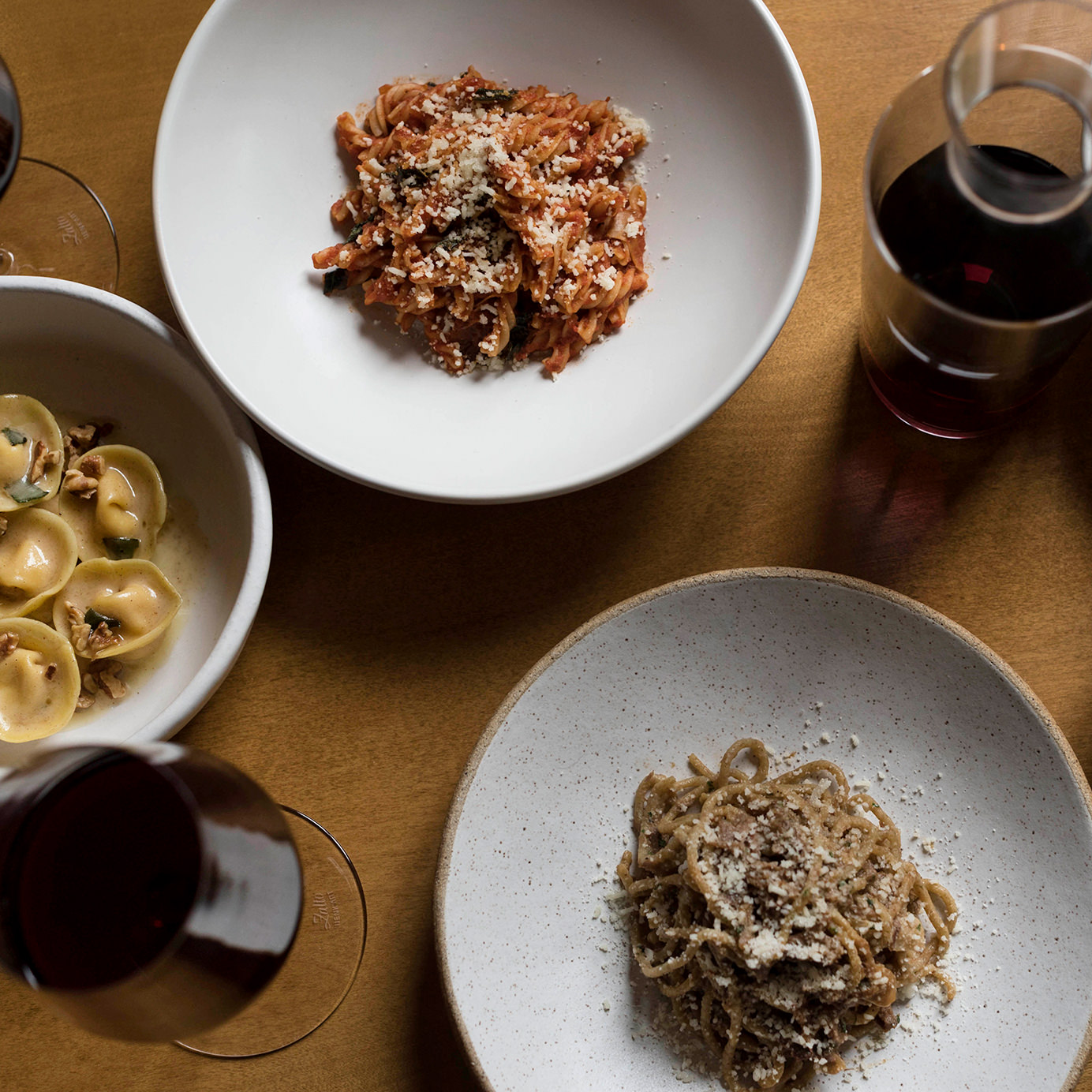The hottest reservation in New York City right now isn’t some old-school grand dame or Michelin-starred Manhattan boite. It’s Fausto, a laid-back Italian restaurant on a wide, commercial avenue in Brooklyn, tucked between two quiet, residential neighborhoods.
Fausto opened on December 9. It was a curious move for owner and beverage director Joe Campanale, the now-33-year-old sommelier who held rank among the New York restaurant elite before most 20-somethings firmly quit the ramen-and-Franzia diet. By the age of 30, Campanale was at the helm of four of Manhattan’s hottest restaurants, had been named one of Food & Wine’s Sommeliers of the Year, and was included on “30 Under 30” lists by Forbes, Wine & Spirits, and Zagat, to name a few. Why would a sommelier known for creating trendy West Village spots cut ties, pack up, and open a neighborhood restaurant in Brooklyn?
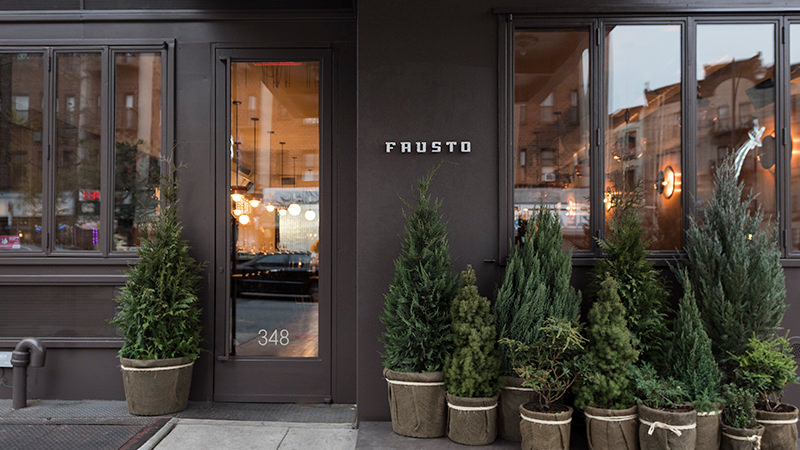
In a dining scene as competitive as NYC, where it’s a safe bet that a restaurant will go out of business within five years, there’s increasing pressure to design unique, innovative concepts. But there’s increasing demand for quality, casual neighborhood standards. As fine dining has evolved, and former Manhattanites have settled in longstanding Brooklyn communities, restaurants in those areas have shifted their focus.
By proving that he can master the classics of urban dining — quality ingredients, value, excellent beverages, warm hospitality — Campanale is driving the neighborhood restaurant 2.0 concept. Again.
*
Campanale’s journey into the wine world was a series of fortunate events. A semester abroad in Florence introduced the Queens native to the wines of nearby Chianti, spurring him to take wine classes when he got back to NYC. While working at Italian Wine Merchants in Manhattan, Campanale’s connections helped him obtain a sommelier position at venerable Italian restaurant Babbo — a title that Campanale freely admits he was under-qualified for — followed by the opportunity that every somm dreams of: the chance to open a restaurant and run its beverage program.
“What 23-year-old gets an opportunity like that?” Campanale says, somewhat incredulously. “So I was like, yes! Sign me up.”
His restaurant was dell’anima, a tiny West Village hotspot that commanded two-hour wait times within months of its 2007 opening. Next came L’Artusi, Anfora, and the now-shuttered L’Apicio, all within just five years.
Campanale’s West Village fleet was at the forefront of what soon became a national movement: the casualization of fine dining. Michelin-starred cuisine was served on a butcher block, beneath now-de rigueur exposed Edison lightbulbs. Gastropubs and wine bars replaced white-tablecloth establishments with $300 floral arrangements. Spots like dell’anima were trendy destinations for out-of-towners, and favorites of jeans-clad locals (though in the West Village, it’s a solid bet that those jeans cost more than your rent). They also solidified Campanale’s position as a top New York restauranteur, beverage director, and sommelier — one with his finger on the pulse of what’s cool.
That’s why the city’s restaurant and beverage scene uttered a collective gasp when it came to light that Campanale had discreetly left the restaurants in March 2016. Whereas the restaurant group’s partner and chef Gabe Thompson’s late 2015 departure received immediate media attention, Campanale slipped away quietly, leaving many to wonder just what had transpired behind closed doors.
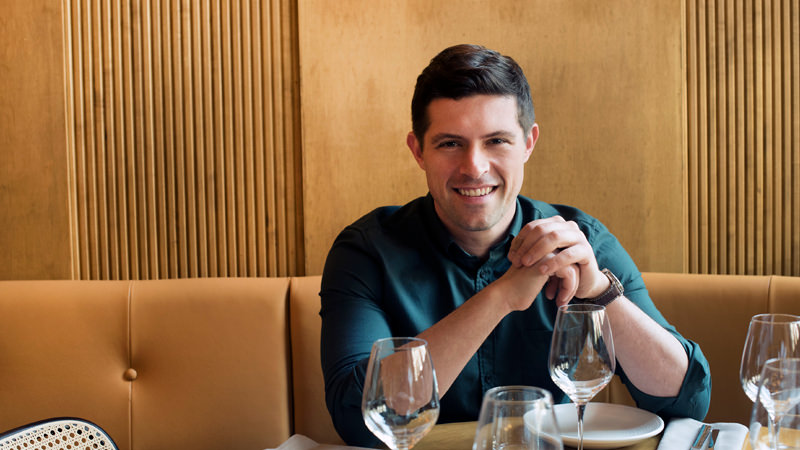
“It was kind of bittersweet,” Campanale says. He’s tight-lipped about his departure, allowing only that “I felt that there was still stuff that I wanted to do in the restaurant industry, especially with a focus on better quality ingredients and really good value wine.”
While the critical reception of Campanale’s former restaurants remains strong, they sit firmly in the category of solid, fall-back dining establishments, not quite reaching the status of a New York standard like Gramercy Tavern. They also lack the innovation and trendy vibe of spots like Nur, Don Angie, or Olmsted. After the departures of all but one of the restaurants’ partners, the establishments no longer have the enthusiasm of “a team that inspires the kind of excitement engendered by, say, ’N Sync back in the day,” as described by Food & Wine upon L’Artusi’s opening. L’Apicio’s May 2017 closing could indicate the start of a downward spiral for Campanale’s former restaurants.
Shortly after Campanale left, longtime L’Artusi chef Erin Shambura announced her departure as well. The pair teamed up, and as he had once done in the West Village, Campanale wanted to marry elevated neighborhood dining with authentic Italian dishes and wines. But 10 years after opening dell’anima, his compass had shifted.
“I was really set on doing a Brooklyn restaurant,” Campanale says. He had moved to the Fort Greene neighborhood from the West Village a few years earlier. “There were just so few restaurants that we like to go to in the area, so we thought this area could use another really good restaurant,” he says. With a chef, a concept, and a general location in hand, Campanale set out to find the right space for the yet-unnamed Fausto.
*
In Italian, the word “fausto” refers to something that is lucky or auspicious. While one could argue that characterizes much of Campanale’s career, in this case, it refers to him happening upon one of the most beloved spaces in Brooklyn. Its previous tenant, Franny’s, was a local fixture. With Fausto, Campanale gets to operate his take on a new neighborhood classic in such a notable space.
“Fausto is really personal to me, because this is the first time that I’m doing everything myself,” Campanale says. “It’s scary. It’s not for the faint of heart, but it felt right.”
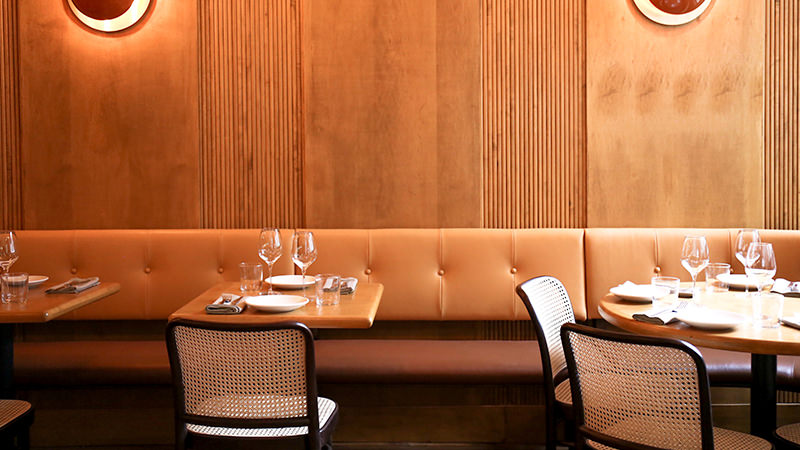
Just two weeks into the restaurant’s tenure and Fausto is settling into its neighborhood. Locals share a glass and catch up at the bar, while groups and the occasional family dine at low tables and banquettes. All pasta dishes are made in-house from local grains using techniques Shambura picked up in Italy prior to the restaurant’s opening.
What sets Fausto apart from other Brooklyn modern Italian spots is Campanale’s personal, value-driven wine program, which reads like a modern sommelier’s wish list. The 75-bottle list makes guests feel as if the top somm is opening a few of his favorite selections in his living room. Small touches like the Zalto glasses used for every bottle add a dash of luxury.
“I really just want to have wines that I would personally spend money to buy and drink with friends and family,” Campanale notes. That includes trendy regions like the Loire Valley, Beaujolais, and the Rhône Valley, new-wave American producers like Arnot Roberts and Enfield Wine Co., and classics like Burgundy and Piedmont.
There are a few seemingly too-good-to-be-true selections, like a $60 1995 Barbera d’Asti that remains exceedingly lively, along with bottles that inadvertently highlight moments from Campanale’s past, like back-vintages of Oddero, one of the first Barolos sold by Campanale as a sales representative for Vinifera Wine Imports right out of college. These biographical selections give Fausto’s list an intimate, personal feeling absent from the trendiest Manhattan restaurant or cutting-edge Brooklyn wine list.
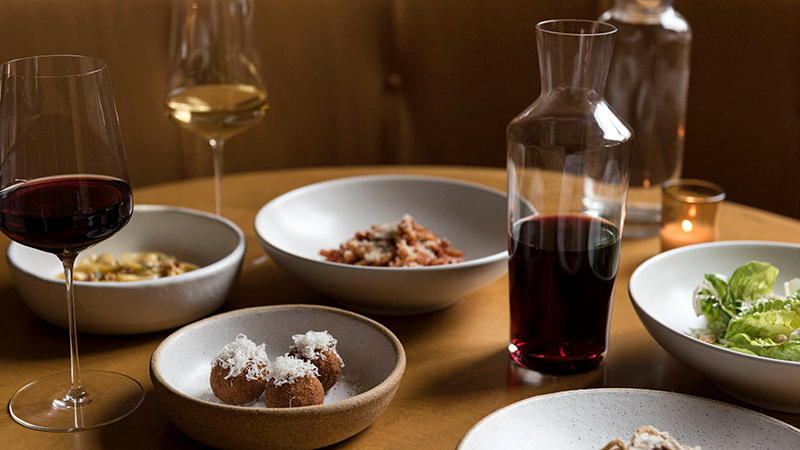
*
Local ingredients, affordable wines, and fine-casual hospitality aren’t new concepts. In fact, they’re all cornerstones of Campanale’s original restaurant empire, along with countless other New York establishments. But 10 years later, mastering these fundamentals is harder than it looks. Diners still crave a well-done, elevated casual concept, particularly in the areas that are the new hubs of New York residential living.
Fausto is a next-generation bistro. Its success is a combination of good timing, the right location, and an owner who knows what works. If Campanale’s departure from Manhattan was the result of a once-in-sync team’s breakup, the result is a win for Brooklyn diners. And if Campanale himself had any hesitations about the turn in his career, they’ve been resolved in the creation of Fausto.
“There’s been such a good opportunity since I left that it feels more like the right thing every day,” Campanale says. “This is exactly what I should be doing.”
All photos credit Liz Clayman.
